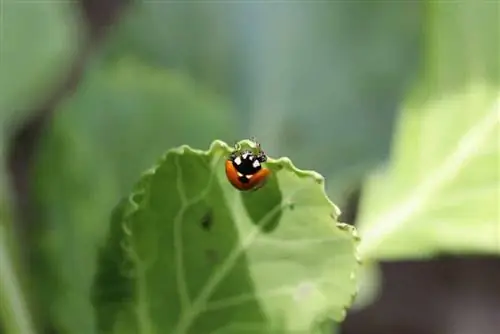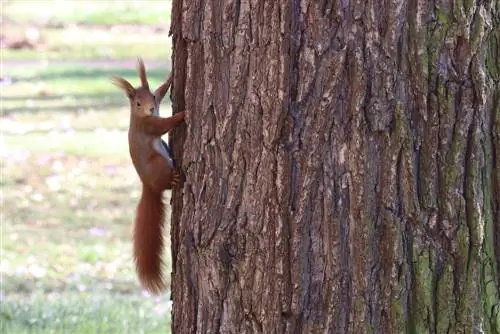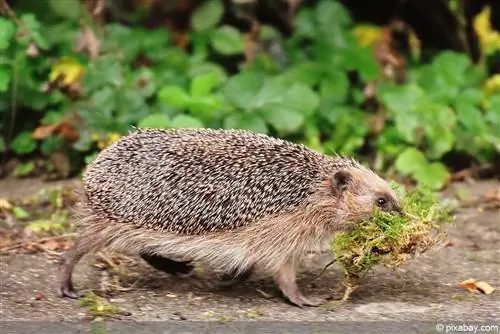- Author admin [email protected].
- Public 2023-12-17 03:39.
- Last modified 2025-01-24 12:45.
Every child knows the beetles with the typical red shell and black dots. Ladybugs also delight passionate hobby gardeners who see the little crawlers as a natural predator of plant lice and mites. What only a few people know: A large proportion of the beneficial insects spend the winter frozen in the cold. It cannot be ruled out that the beetles get lost in houses and apartments. You can help ladybirds overwinter with simple measures.
Beneficial insects in the garden
Ladybirds are indispensable helpers in the garden. The beetles, which can fly, have an almost uncontrollable hunger. Even in the larval stage, the insects destroy a total of up to 3,000 spider mites and aphids. Even in adulthood, the beneficial insects do not hold back and eat between 50 and 100 pests per day. This insatiable appetite quickly becomes noticeable in the lice population in the garden. Positive for the gardener, negative for the harmful insects. Coccinellidae, the beetles' Latin name, are an enrichment for every kitchen and ornamental garden. In order for the insects, which can be up to 8 mm in size, to feel comfortable, a few precautions must be taken:
- Offer the beetles plenty of hiding places
- A natural garden with mixed cultures is optimal
- High tufts of grass and piles of stones are preferred for flying to
The food source in the form of small pests should also be present. Avoid using insecticides from specialist retailers. These products only have a temporary effect; scale insects and aphids in particular quickly become resistant to these products and pass this trait on to their offspring. In addition to the harmful insects, the chemical club often also affects beneficial garden inhabitants, such as ladybirds and parasitic wasps. For this reason, it is advisable to combat aphids etc. using natural means and predators.
Wintering aids
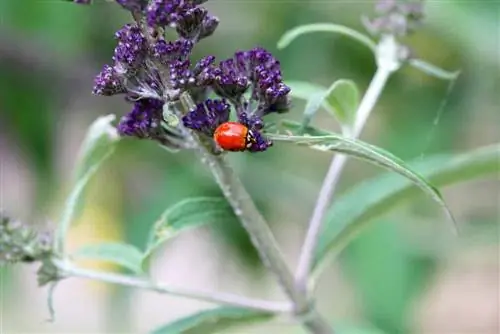
Ladybirds come in countless different variations. In addition to the classic red representatives with their black dots, there are also species without the dark spots. Yellow and black colors are not uncommon, but people do not immediately assign them to the genus “Coccinellidae”. Over 70 different species can be found in Germany alone. A large proportion of them do not migrate to warmer regions shortly before the onset of winter, but rather look for a sheltered place to overwinter in our latitudes. The following places are suitable for spending the icy season unscathed in the cold:
- Niches in stone and wall niches
- Withered pile of leaves
- Insect Hotels
- Rafters
The list goes on and on. Ladybugs are not picky when choosing their winter quarters. Anyone who takes the trouble to search in winter will find many of the beneficial insects in cavities and crevices. Passionate gardeners can help the little lucky beetles by postponing most of the clean-up work until the warm spring. Leave the fallen leaves from the trees on the lawn. Only when the temperatures rise again can the leaves promote the growth of moss in the grass. The same principle applies to the radical pruning of withered plant parts. Instead, cut them back in spring. In the meantime, the material serves as a place for insects to sleep during the winter.
Ladybirds have a special feature: a large number of them overwinter in groups. Many people are surprised when they see a complete population of beetles in their autumn garden. In this case, it is advisable to let the little animals rest undisturbed. This particularly applies to Harmonia axyridis, the harlequin ladybird, which has been displacing native beetle species for several years due to its propensity to reproduce. Just like its relatives, these beneficial insects help eliminate pests.
Tip:
Fly screens on the windows and balcony doors have proven to be effective as protection against ladybird infestations in the house.
First aid in winter
Many people are faced with the question of what to do with a ladybug in winter. It is not unusual for the little crawlers to get lost in our living spaces in search of the right resting place. The warmth and light prevent the beetles from falling into their vital state of cold.
- The rapid change from warm to extremely cold leads to the death of the insects
- Put the ladybugs in a cool room with access to the outside
- A shed, the cellar or a winter garden have proven effective for this
Aphids can also appear on plants when they overwinter indoors. Dry indoor air and active heating sources lead to an infestation of spider mites. If you find a ladybug in your home, you can expose the animal helper near the plants. As already mentioned, the insect's hunger is immense and the lice help the Coccinellidae to replenish its reserves for the winter. After the work is done, a leaf bed in a frost-proof, cold room makes sense.
In an emergency, there is the possibility of providing the spotted contemporaries with water and food. Special breeding sets for ladybird larvae are available commercially. The food contains sterilized flour moth eggs, which adult beetles also enjoy. Alternatively: puree meat and mix it with sugar dissolved in water. Due to your body size, the amount should be small. Using a pipette you can give a drop of it to the ladybug.
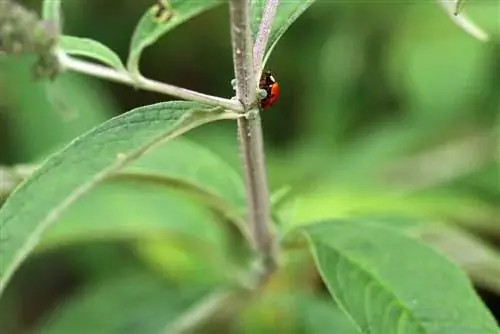
The measure is suitable for making weakened insects fit for the winter. Of course, it is not possible to tell what condition the useful garden resident is in based on their external physical condition. However, this method does not cause any damage and offers the ladybugs an optimal start to overwintering.
Tip:
In addition to insect hotels, you can make special ladybird houses to protect insects and hang them up in the garden.
Conclusion
Ladybirds are useful and it makes sense to help them effectively during hibernation. These popular insects particularly prefer hiding places in the garden, for example in the form of an insect hotel or withered leaves. If you find ladybugs in warm living rooms, you can use simple tricks to get them ready for the cold season. With the first warm rays of sun, the animals come to life and effectively take care of aphid and mite populations. By the way: living together with hundreds of people has another advantage. In addition to maintaining warmth, which is so important for ladybirds to overwinter, the animals can also find a partner more quickly in spring and provide for offspring. After an extended hibernation, this is child's play for the animals.

